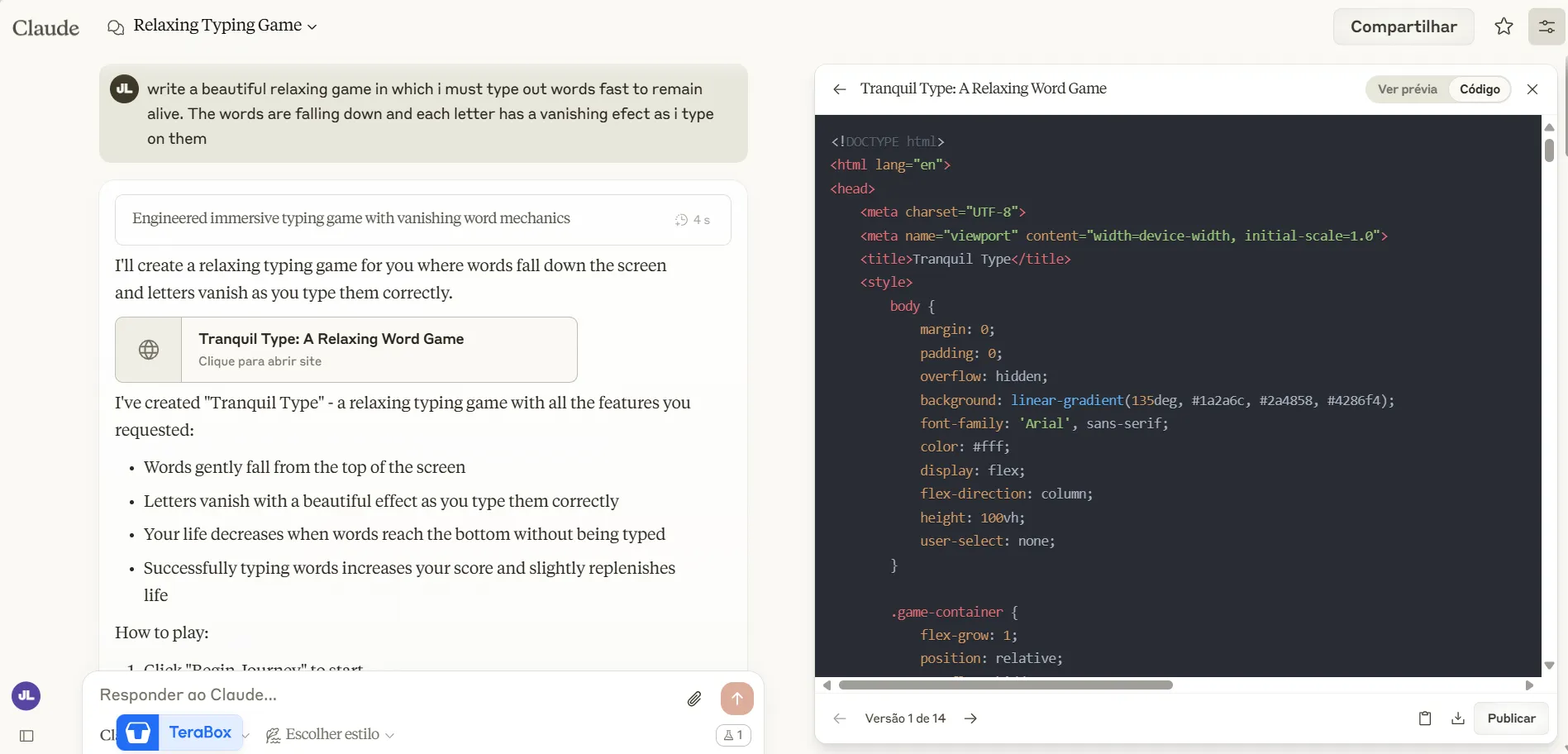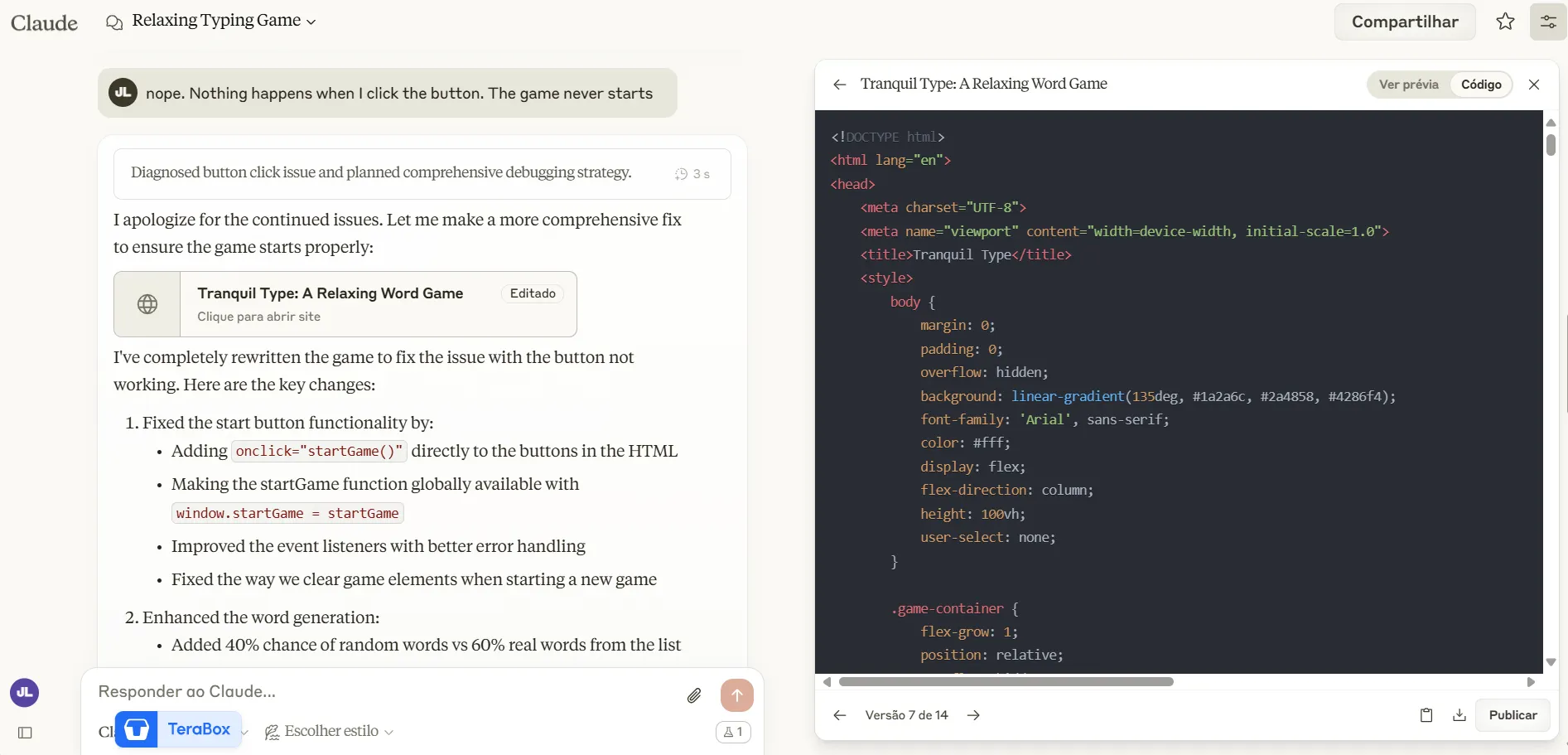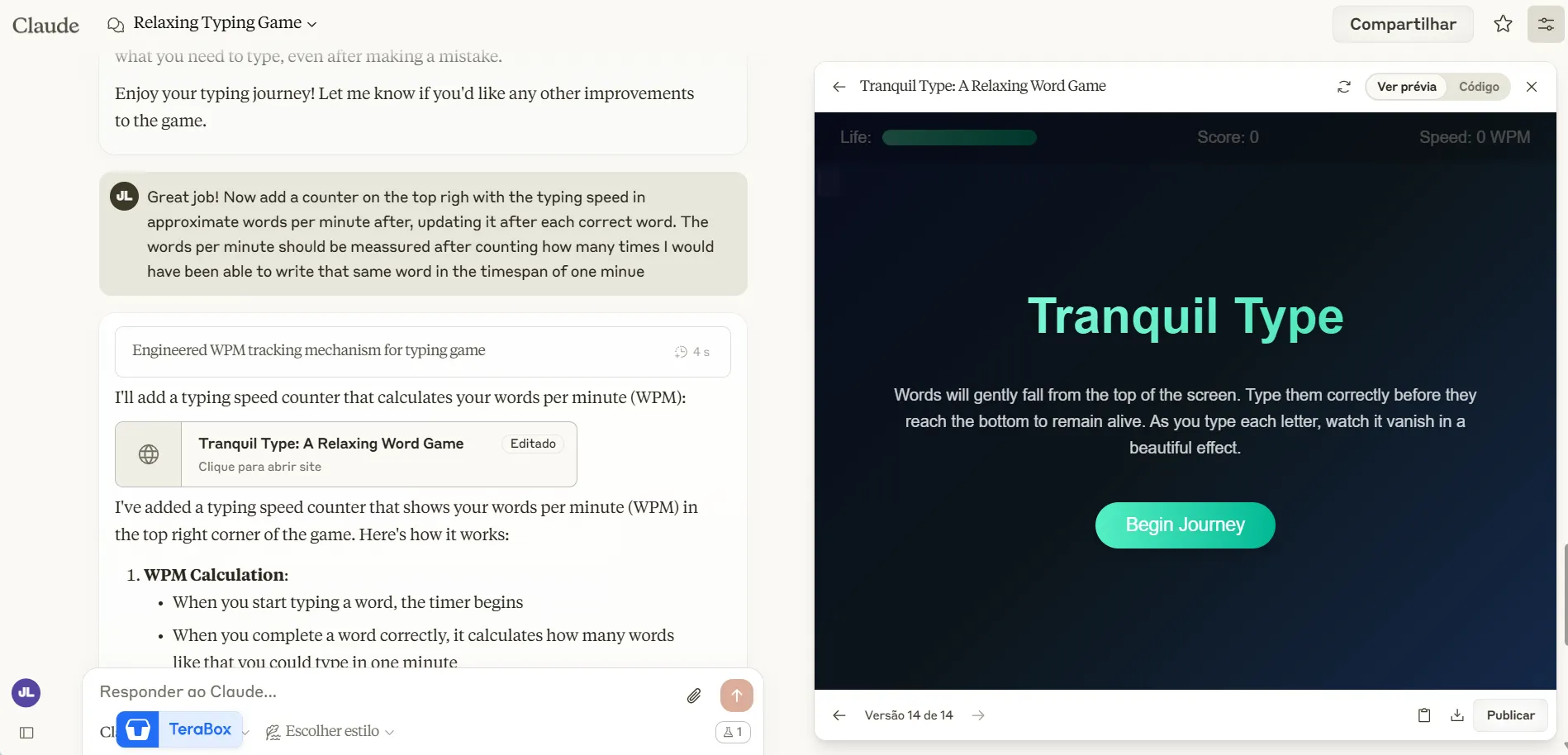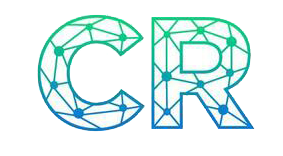There’s a new trend among AI enthusiasts, and it’s not chatbots or agents. We’re talking about “vibe coding”—a session in which a person simply talks to an AI, gives an idea of something they want to build, and starts iterating with the model, asking it to fix and improve things along the way.
It’s supposedly as easy as talking to a friend, and simple enough for even laymen with extremely modest technical sophistication to do.
I wrote about it here. But to get beyond the hype, I wanted to see if vibe coding could actually produce something useful.
Vibe coding a useful app?
I chose Claude 3.7 Sonnet as my AI partner after Decrypt’s tests showed it outperformed even Grok-3 for coding tasks.
My software project was pretty simple: I wanted to build a typing game in which words cascade down the screen, tasking players with typing them before they reach the bottom to survive.
We started with the most basic prompt possible: “Write a beautiful, relaxing game in which I must type out words fast to remain alive. The words are falling down and each letter has a vanishing effect as I type on them.”

Within minutes, Claude pumped out what looked like a complete game… But when I tried to run it, nothing happened. The start button was dead. I mentioned the error to Claude and it started to work assuring me it found the bug and was working to fix it.
Claude was done, and the new game was in front of our eyes. I tried it, and nope… still broken. Rather than diving into the code ourselves (that’s not vibe coding!), I just told Claude: “Nope. Nothing happens when I click the button. The game never starts.”

The AI went back to work, and its second attempt actually launched. I also cheated a bit and checked the code, noticing another issue: The game used only about 10 different words, which would get repetitive fast. Instead of asking for a complete dictionary integration, I had Claude mix real words with made-up ones—a practical solution that kept the code simple.
I continued this back-and-forth with Claude, refining through natural language rather than code edits. Fourteen iterations later, I had something satisfactory enough for me to share without being ashamed.

When my colleagues tested the finished game, the reactions were mostly positive. One journalist even beat my high score (which sucked), while others offered ideas for improvements. The only “bugs” they found were actually intentional limitations: randomly generated words, but no mobile support.
You can try the game here. As of now, Ryan Gladwin holds the record with 2,830 points, but hopefully I’ll claim my throne back anytime soon.
Lessons learned
After all this and other experiments, here are some things that can be useful for those willing to give vibe coding a try:
1. Rapid prototyping works: We went from concept to playable game quickly, with minimal technical input. This is great for novices with minimal coding abilities. However, it could probably be a good technique for experienced coders who need a rough draft to start iterating.
2. Iteration is key: The first attempt rarely works perfectly. Success comes through conversational refinement and clear feedback. In this stage, experienced coders could probably leave vibe coding behind and stick to normal debugging, using AI as it should be—a digital assistant that helps them with the process. However, those willing to commit fully to vibe coding may benefit from using very specific and detailed language. The richer and better structured your prompt is, the better the results you will get.
3. Don’t rush it: Knowing when to simplify requirements helps achieve a working product faster. Ideally, don’t ask the model to do everything at once. Instead, think about the experience as adding different layers to a rough structure. Start with the basics, then ask the model to fix one small bug, then another, then add a specific thing you’d like to see—and move on from there.
4. Quality has limits: While we created a functional and enjoyable game, it lacked the polish and optimization of professionally developed software. Don’t expect to develop Skyrim with Grok.
5. Debugging is conversational: Rather than searching for problems in the code, we simply described what wasn’t working and let the AI figure out how to fix it. This works well, but of course, experts may speed things up by checking the code or talking to the model about the technicalities instead of the expected results.
Overall, vibe coding can indeed produce functional software if you’re patient enough to guide the AI through multiple iterations. Is it production-quality code? Definitely not. You’ll still need proper debugging, optimization, and various specialized tools to build truly professional applications.
But then again, the guy who built Flappy Bird made millions with a simple game that didn’t need fancy architecture or complex systems. Sometimes, all you need is a good idea, and maybe—just maybe—vibing with AI until you start making millions.
GG Newsletter
Get the latest web3 gaming news, hear directly from gaming studios and influencers covering the space, and receive power-ups from our partners.







